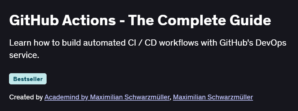A Guide to PyQt6 for Beginners Course
An excellent starting point for building professional desktop applications using Python and PyQt6.
What will you learn in A Guide to PyQt6 for Beginners Course
Build desktop applications using Python and the PyQt6 framework
Understand Qt widgets, layouts, signals and slots for GUI development
Design interactive UIs with buttons, dialogs, and menus
Work with events, user inputs, and custom logic in PyQt6
Use the Qt Designer tool to build and integrate user interface designs
Create complete standalone applications with real-world usability
Program Overview
Module 1: Introduction to PyQt6 & Setup
⏳ 0.5 week
Topics: Installing PyQt6, understanding GUI application flow
Hands-on: Set up your first PyQt6 project and run a basic window
Module 2: Widgets, Layouts & Properties
⏳ 1 week
Topics: QPushButton, QLabel, QLineEdit, layout management
Hands-on: Build a login form using horizontal and vertical layouts
Module 3: Signals, Slots & Event Handling
⏳ 1 week
Topics: Signal-slot mechanism, event binding, user interaction
Hands-on: Create a calculator app reacting to button inputs
Module 4: Dialogs, Menus & Toolbars
⏳ 0.5 week
Topics: QDialog, QMessageBox, QMenuBar, QToolBar
Hands-on: Add menus and message boxes to a main window
Module 5: Qt Designer & UI Integration
⏳ 0.5 week
Topics: Designing interfaces visually, converting
.uito PythonHands-on: Design a form in Qt Designer and use it in a PyQt6 app
Module 6: Final Projects & Best Practices
⏳ 0.5 week
Topics: Project structure, file organization, modular design
Hands-on: Build and structure a mini contact manager or notes app
Get certificate
Job Outlook
PyQt6 is widely used for building Python-based desktop applications
Relevant for software developers in fintech, automation, and research tools
Valuable for freelance app developers and internal tool creators
PyQt skills complement back-end or data-oriented developers seeking UI control
- Clear, step-by-step guidance for beginners
- Good balance of theory and hands-on UI building
- Covers both manual coding and visual design
- Does not cover advanced topics like threading or database integration
- Best suited for learners with some Python knowledge
Specification: A Guide to PyQt6 for Beginners Course
|
FAQs
- Teaches GUI development using PyQt6 widgets and layouts.
- Covers event handling with signals and slots for interactive apps.
- Provides hands-on mini-projects like calculators and contact managers.
- Introduces visual design with Qt Designer and integration into Python.
- Prepares learners to create functional, user-friendly standalone apps.
- Some Python familiarity is recommended, especially for functions and object-oriented concepts.
- Focuses on PyQt6-specific GUI development rather than core Python.
- Provides examples and exercises that reinforce Python basics in context.
- Helps learners transition from Python scripting to desktop application development.
- Ideal for learners with basic programming skills aiming to create GUI apps.
- Covers widgets like buttons, labels, input fields, and menus.
- Teaches layout management for clean, responsive interfaces.
- Introduces signals and slots to handle user interactions.
- Guides using dialogs, message boxes, toolbars, and menus.
- Includes Qt Designer for visual interface design and integration.
- Equips learners to build small, practical desktop applications.
- Teaches best practices for modular project structure and file organization.
- Offers skills to create productivity apps, calculators, or note managers.
- Enhances Python development capabilities for internal or client projects.
- Prepares learners to quickly prototype and deploy desktop tools.
- Focuses primarily on beginner-friendly GUI development.
- Does not include advanced topics like multi-threading or database connections.
- Prepares learners with foundational skills for later advanced learning.
- Encourages practicing Python GUI coding before tackling complex features.
- Provides a clear pathway to expand into professional desktop app development.





